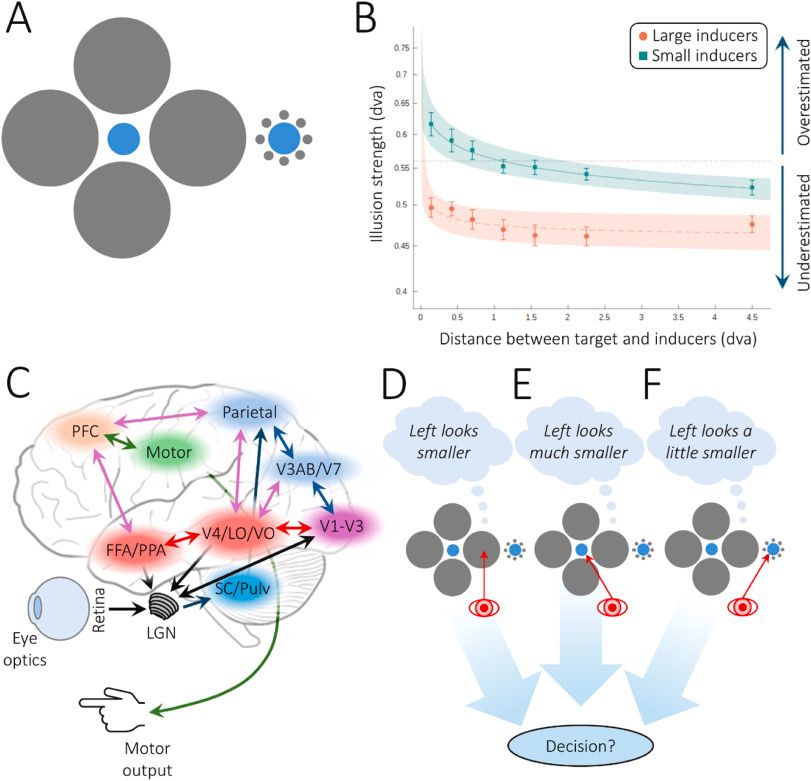
🚨 New preprint out from our lab!
📄 The Rod Bipolar Cell Pathway Contributes to Surround Responses in OFF Retinal Ganglion Cells
👉 www.biorxiv.org/content/10.1...
@dagnsci.bsky.social
Neuroscience PhD student at the Spinoza Centre and University Medical Centre Groningen. Interest in visual neuroscience

🚨 New preprint out from our lab!
📄 The Rod Bipolar Cell Pathway Contributes to Surround Responses in OFF Retinal Ganglion Cells
👉 www.biorxiv.org/content/10.1...
Mapping function in the tree shrew visual system using functional ultrasound imaging. https://www.biorxiv.org/content/10.1101/2025.10.03.680247v1
04.10.2025 01:15 — 👍 5 🔁 2 💬 0 📌 0Anesthesia Induces Shifts in Spatial Frequency Preference in the Primary Visual Cortex https://www.biorxiv.org/content/10.1101/2025.09.29.679183v1
01.10.2025 01:15 — 👍 0 🔁 2 💬 0 📌 0
We’re hiring! We’re looking for two RAs to study neuroplasticity in sight loss, sight rescue and development in children and adults @ucl.ac.uk using a wide range of neuroimaging and behavioral methods. Please help spread the word! Apply by 16 Oct! t.ly/q3aYe #neurojobs #NeuroSkyence
27.09.2025 10:57 — 👍 59 🔁 42 💬 1 📌 2
An array of 9 purple discs on a blue background. Figure from Hinnerk Schulz-Hildebrandt.
A nice shift in perceived colour between central and peripheral vision. The fixated disc looks purple while the others look blue.
The effect presumably comes from the absence of S-cones in the fovea.
From Hinnerk Schulz-Hildebrandt:
arxiv.org/pdf/2509.115...
Functional organization of the human visual system at birth and across late gestation https://www.biorxiv.org/content/10.1101/2025.09.22.677834v1
22.09.2025 23:16 — 👍 6 🔁 7 💬 0 📌 0Movie-trained transformer reveals novel response properties to dynamic stimuli in mouse visual cortex https://www.biorxiv.org/content/10.1101/2025.09.16.676524v1
18.09.2025 00:15 — 👍 0 🔁 1 💬 0 📌 0A mouse model for cerebral/cortical visual impairment (CVI) impairs vision and disrupts the spatial frequency tuning of neurons in visual cortex https://www.biorxiv.org/content/10.1101/2025.09.19.677390v1
19.09.2025 22:17 — 👍 0 🔁 1 💬 0 📌 0Resting-State fMRI and the Risk of Overinterpretation: Noise, Mechanisms, and a Missing Rosetta Stone https://www.biorxiv.org/content/10.1101/2025.09.16.676611v1
19.09.2025 21:15 — 👍 16 🔁 7 💬 0 📌 2Spatial predictive coding in visual cortical neurons https://www.biorxiv.org/content/10.1101/2025.09.17.676794v1
20.09.2025 00:17 — 👍 8 🔁 3 💬 0 📌 0Our article is out in Annual Review of Vision Science: “Visual Image Reconstruction from Brain Activity via Latent Representation”
We trace the path from early brain decoding to modern NeuroAI, highlight progress & pitfalls, and discuss future directions www.annualreviews.org/content/jour...
Distinct growth regimes govern crowding in foveal and extrafoveal vision https://www.biorxiv.org/content/10.1101/2025.09.17.673105v1
17.09.2025 21:17 — 👍 0 🔁 1 💬 0 📌 0
“The results show that neural reactions to colors are somewhat standard and don’t seem to vary much from person to person. But these neuroanatomical findings can’t answer the question of how it feels to see red…”
#scicomm
#neuroskyence
www.sciencenews.org/article/red-...
🧪 🧠
Information, Movement and Adaptation in Human Vision https://www.biorxiv.org/content/10.1101/2025.09.05.674315v1
10.09.2025 19:15 — 👍 3 🔁 2 💬 0 📌 0
Cool work by Arash Afraz's lab using a dual AI system to be able to reverse-engineer the perceptual experience of receiving visual cortex stimulation. www.nature.com/articles/s41...
08.09.2025 17:09 — 👍 22 🔁 2 💬 0 📌 0Enhancing experience-dependent plasticity accelerates vision loss in a murine model of retinitis pigmentosa https://www.biorxiv.org/content/10.1101/2025.09.02.673825v1
07.09.2025 15:15 — 👍 0 🔁 1 💬 0 📌 0Shared texture-like representations, not global form, underlie deep neural network alignment with human visual processing https://www.biorxiv.org/content/10.1101/2025.08.29.673066v1
05.09.2025 00:15 — 👍 2 🔁 2 💬 0 📌 0Eye movements, vision and memory through the lens of Sherlock - awesome collaborative project led by @matthiasnau.bsky.social
25.08.2025 12:25 — 👍 11 🔁 4 💬 0 📌 0
🚨 New preprint: Invisible neural frequency tagging (RIFT) for the underfunded researcher:
👉 www.biorxiv.org/cgi/content/...
RIFT uses high-frequency flicker to probe attention in M/EEG with minimal stimulus visibility and little distraction. Until now, it required a costly high-speed projector.
Why was Newton so sure that if you just did his optical experiments you’d *have* to believe him about light? Kirsten Walsh, Tom Roberts and I use 4E cognition to suggest an answer. Anachronism? You be the judge… (also i’m real proud of this paper) www.journals.uchicago.edu/doi/epdf/10.... #philsci
22.08.2025 10:28 — 👍 29 🔁 7 💬 4 📌 1Enjoying this 1884 paper by CS Peirce and Joseph Jastrow on whether perception exhibits a hard threshold - the idea that as stimulus intensity increases, at some value it goes from unconscious to conscious, rather than following a smooth probabilistic curve. psychclassics.yorku.ca/Peirce/small...
22.08.2025 06:53 — 👍 8 🔁 2 💬 1 📌 0ssVEP-Based Estimates of Contrast Sensitivity, Visual Acuity, and Orientation Sensitivity Do Not Correlate with Each Other or with Psychophysical Measures in Healthy Individuals: https://osf.io/fr72q
20.08.2025 22:13 — 👍 2 🔁 1 💬 0 📌 0Development of Perceptual Grouping Ability after Longer Periods of Post-operative Visual Experience: https://osf.io/vq9gp
14.08.2025 07:17 — 👍 1 🔁 1 💬 0 📌 0Why can we decode visual mental contents from primary visual cortex when all evidence points at the absence of sustained spiking in this part of the brain? Today at #CCN25 poster C104, Noa will present a tentative answer from her work with attractor models. Wish I could’ve been there!
15.08.2025 07:57 — 👍 29 🔁 5 💬 0 📌 0Network dynamics for sensory prioritization: Functional connectivity related to individual sensory weighting of vision versus proprioception during upper limb control https://www.biorxiv.org/content/10.1101/2025.07.31.667932v1
01.08.2025 19:17 — 👍 0 🔁 2 💬 0 📌 0Delighted to share this paper, now published in @arvoinfo.bsky.social. With @spk3lly.bsky.social and Anna Geuzebroek we explored differences in visual cortical responses for pattern pulses and pattern reversals. Here's the link:
jov.arvojournals.org/article.aspx...
Visual stimulus-evoked blood velocity responses in individual human posterior cerebral arteries measured with dynamic phase-contrast functional MR angiography https://www.biorxiv.org/content/10.1101/2025.07.20.665220v1
25.07.2025 14:15 — 👍 1 🔁 1 💬 0 📌 0We cover a broad range of topics, including:
- using fMRI to predict recovery in visual disorders
- eye-tracking to measure visual function
- the auditory system and tinnitus
- sight restoration therapies
Hope to see you there!
Don’t miss our upcoming CCN satellite event, Applying Computational Models to Clinical Disorders (August 11th). This session will showcase how computational methods are transforming our understanding and treatment of sensory disorders
dlwiki.nin.nl/ccn_2025
#CCN2025 #CompNeuro #VisionScience

Opinion piece now published as part of special issue in Neuropsychologia: #visionscience #neuroskyence #psychscisky #illusions doi.org/10.1016/j.ne...
Also, this happens to be my 100th publication. Join me for 🍺in OGH on Friday afternoon! 🙂